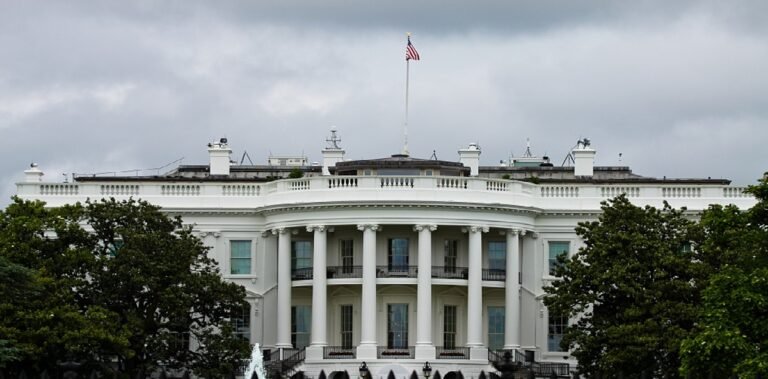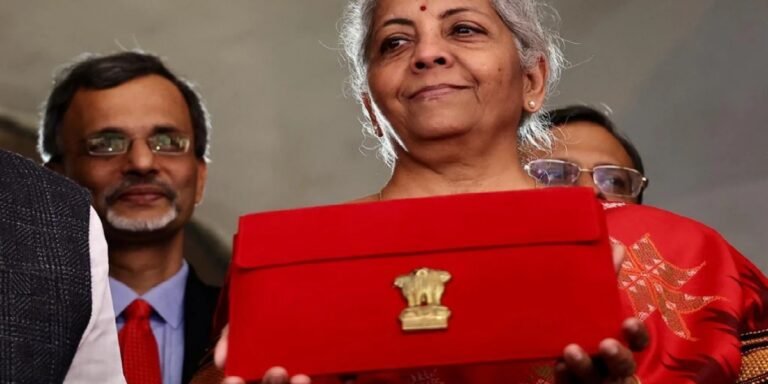
5 Bold Moves: Indo-US Tariff Response
1.The US’s Generalized System of Preferences (GSP) Revocation: A Jolt to Indian Exporters
The first significant move, and perhaps the most jarring, was the United States’ decision to revoke India’s beneficiary status under the Generalized System of Preferences (GSP) in 2019. The GSP, a preferential trade program, allowed certain Indian goods to enter the US market duty-free, providing a significant competitive advantage. Its removal, citing India’s lack of “equitable and reasonable access” to its markets, was a clear signal of the US’s growing frustration with the trade imbalance and perceived protectionist policies.
- The Impact: This move hit Indian exporters, particularly in sectors like textiles, pharmaceuticals, and agricultural products, impacting billions of dollars in trade. The loss of tariff exemptions increased costs, potentially reducing competitiveness and affecting export volumes.
- The Strategic Rationale: The US’s move aimed to leverage its market power to pressure India into opening its markets further, addressing concerns about market access and intellectual property rights. It served as a stern message that the US was willing to use trade tools to enforce its demands.
- The Consequence: This action became a serious source of increased tension between the nations.
2.India’s Retaliatory Tariffs: A Measured Response
In response to the GSP revocation, India implemented retaliatory tariffs on 28 US products, including almonds, apples, and walnuts. This move, while seen as a necessary countermeasure, was carefully calibrated to avoid escalating the conflict into a full-blown trade war.
- Strategic Purpose: India’s retalitory tariffs were designed to demonstrate that India would not be passive regarding unfair trade practices. It aimed to pressure the United States to reconsider its stance on the GSP and to engage in meaningful negotiations.
- Economic Implications: The tariffs impacted US exporters, particularly those in the agricultural sector, where India is a significant market. However, the overall economic impact was relatively limited, as India sought to target sectors where it had alternative sources or domestic production.
- Diplomatic Signaling: India’s response also sent a clear diplomatic message: while open to dialogue, it would not back down from defending its economic interests.
3.The Quest for a Trade Deal: Negotiations and Deadlocks

Throughout this period, both nations engaged in intense negotiations to reach a comprehensive trade deal. The goal was to address the underlying issues that had led to the tariff disputes and to create a more balanced and mutually beneficial trading relationship.
- Areas of Negotiation: Key areas of discussion included market access for agricultural products, intellectual property rights, data localization, and tariff reductions.
- Obstacles and Challenges: The negotiations faced numerous obstacles, including differing regulatory standards, domestic political pressures, and diverging economic priorities. India’s desire to protect its domestic industries clashed with the US’s push for greater market access.
- The Inevitable Deadlocks: This resulted in deadlocks, reinforcing the complexities of balancing competing economic interests within a critical bilateral relationship
4.Focused Sectoral Agreements: Incremental Progress
Recognizing the difficulties in reaching a comprehensive trade deal, both nations began exploring focused sectoral agreements. This approach allowed for incremental progress in specific areas of mutual interest.
- Examples: Agreements on pharmaceuticals, medical devices, and agricultural products showed that progress could be made even amidst broader trade tensions.
- The Benefit: By focusing on specific sectors, both countries could address immediate concerns and build trust, paving the way for future cooperation.
- Limitation: Sector specific deals, although helpful, do not solve the main overall trade discrepencies.
5.The Shifting Geopolitical Context: Strategic Realignment
The backdrop to these tariff disputes, which are central to the ongoing Indo-US Tariff Response, is the shifting geopolitical context, particularly the rise of China and the changing dynamics of the Indo-Pacific region. This has created a strategic imperative for both India and the US to strengthen their economic ties, directly impacting the strategic decisions within the Indo-US Tariff Response. Therefore, geopolitical concerns are heavily featured within the overall Indo-US Tariff Response dialogue.”
- Shared Strategic Interests: Both nations share concerns about China’s growing economic and military influence. Strengthening their economic relationship is seen as a crucial component of their broader strategic partnership.
- Diversifying Supply Chains: The pandemic highlighted the vulnerability of global supply chains, increasing the importance of diversifying away from dependence on single sources. India, with its large market and growing manufacturing capabilities, has emerged as a key partner in this effort.
- The Future Of The Indo-US Relationship: The geopolitical landscape has shifted the emphasis from pure trade imbalances toward creating resiliency in critical supply chains. This shift gives more leverage to India, within the context of trade negociations.
- Technological Cooperation: A growing sector in trade discussion, is concerning technological
- Supply Chain Resilience: The effects of the Covid pandemic has reinforced the discussion surrounding supply chain resilience. This has resulted in some shifting of trade, and new emphasis on diversified supplyco-operation, and the balance of data protection, versus access for technological developments.
Analysis and Long-Term Implications
The Indo-US tariff disputes have highlighted the complexities of balancing economic interests in a rapidly changing global landscape. While tariffs have served as tools of pressure and negotiation, they have also underscored the importance of dialogue and cooperation.
- The Importance of Dialogue: The ongoing negotiations, despite their challenges, demonstrate the commitment of both nations to resolving their trade differences. Continued dialogue is essential to building trust and fostering a more stable and predictable trading environment.
- The Need for a Long-Term Vision: A long-term vision is needed to address the underlying structural issues that have contributed to the trade imbalances. This requires both nations to be willing to make compromises and to work together to create a more balanced and mutually beneficial trading relationship.
- The Role of Multilateralism: The importance of multilateralism should not be overlooked. While bilateral trade negotiations are important, they must be conducted within the context of a rules-based multilateral trading system..
- Future Trade Prospects: The future of Indo-US trade will depend on the ability of both nations to navigate their competing economic interests and to build a strong and resilient economic partnership. In the current global climate, and with the presence of many complicated geopolitical influences, it will be a long process.
Expanding on the GSP Revocation’s Ripple Effects:

“The US’s revocation of GSP status wasn’t merely a transactional decision; it was a strategic recalibration of the Indo-US economic relationship, a key turning point in the Indo-US Tariff Response. Beyond the immediate financial impact on Indian exporters, it signaled a shift in the US’s perception of India’s economic policies, fundamentally altering the dynamics of the Indo-US Tariff Response. This action served as a critical catalyst for subsequent developments within the broader Indo-US Tariff Response narrative.”
- Psychological Impact: The move created a sense of uncertainty and vulnerability among Indian businesses, particularly smaller enterprises reliant on GSP benefits. This uncertainty could deter future investments and hinder long-term planning.
- Diversification Imperative: The GSP revocation accelerated India’s push for export diversification. It underscored the need to reduce reliance on the US market and explore alternative trade partners in regions like Southeast Asia, Africa, and Latin America.
- Domestic Manufacturing Push: The setback also acted as a catalyst for India’s “Make in India” initiative. The government intensified efforts to promote domestic manufacturing and reduce dependence on imports, aiming to build a more self-reliant economy.
- Impact on Political Relations: The GSP decision strained the political relations between the two countries, even though they were still working together on other important issues. This added a layer of complexity to future trade negotiations.
Analyzing India’s Retaliatory Tariffs in a Broader Context:
India’s response, while measured, was a clear demonstration of its growing assertiveness in international trade, a key aspect of the Indo-US Tariff Response. It highlighted India’s willingness to use trade tools to defend its economic interests, even against a powerful trading partner like the US, showcasing a critical moment within the broader Indo-US Tariff Response narrative.”
- Strategic Calculation: The selection of targeted US products reflected a strategic calculation. India aimed to minimize the impact on its own economy while maximizing the pressure on US exporters.
- Domestic Political Considerations: The retaliatory tariffs also served domestic political purposes, signaling to Indian businesses and consumers that the government was taking a firm stance against perceived unfair trade practices.
- WTO Implications: India’s actions were carefully scrutinized by the World Trade Organization (WTO). It was vital that the actions were defensible within WTO regulations. Any violations could result in sanctions and further escalate trade tensions.
- Long term consumer impacts: Tariffs result in higher prices for consumers. This effect is felt on both sides of the trade, and can effect the long term relations of the consumers of both nations.
The Ongoing Trade Negotiations: A Test of Bilateral Relations:
The quest for a comprehensive trade deal has become a litmus test for the Indo-US relationship, a central point of discussion within the Indo-US Tariff Response. The ability of both nations to overcome their differences and reach a mutually acceptable agreement will have significant implications for the future of their economic partnership, and the overall narrative of the Indo-US Tariff Response.
- Data Localization Debate: The issue of data localization has emerged as a major sticking point in the negotiations, a significant hurdle in the Indo-US Tariff Response. India’s push for data localization, aimed at protecting its digital sovereignty, has been met with resistance from US tech companies, making it a critical area of contention within the broader Indo-US Tariff Response dialogue.
- Intellectual Property Rights: Differences in intellectual property rights regimes have also created friction. The US has pressed for stronger IP protections, while India has sought to balance IP rights with access to affordable medicines and technology.
- Agricultural Market Access: The agricultural sector remains a sensitive area of negotiation. The US has sought greater market access for its agricultural products, while India has sought to protect its domestic farmers.
- Future of digital trade: A critical component of the ongoing Indo-US Tariff Response, is increasingly important. As the world becomes more and more digital, the trade of digital goods and services will become more important. This means that both nations will need to come to agreements on how to regulate and tax digital trade, adding another layer of complexity to the Indo-US Tariff Response. Any future agreement must take into account the digital trade, as this is a key factor within the overall Indo-US Tariff Response.
Sectoral Agreements as Building Blocks:

While a comprehensive trade deal remains elusive, sectoral agreements offer a pragmatic approach to addressing specific trade barriers and fostering cooperation, which is a key tactical element within the larger Indo-US Tariff Response. This approach, focused on specific sectors, demonstrates the evolving strategies within the overall Indo-US Tariff Response framework
- Pharmaceutical Cooperation: Agreements on pharmaceuticals and medical devices can facilitate the flow of essential medicines and medical technologies between the two countries.
- Agricultural Collaboration: Cooperation in the agricultural sector can promote sustainable farming practices, enhance food security, and facilitate trade in agricultural products.
- Digital Economy Partnerships: Collaboration in the digital economy can foster innovation, promote data flows, and enhance cybersecurity cooperation.
- Defense Trade and Technology: The increase of defense trade between the two nations, also increases the need for trade agreements on technology transfer, and export controls.
Geopolitical Realignment and the Strategic Imperative:
The shifting geopolitical landscape, particularly the rise of China, has created a strategic imperative for India and the US to strengthen their economic ties, shaping the strategic context of the Indo-US Tariff Response. This geopolitical pressure directly influences the strategies employed within the Indo-US Tariff Response framework.
- Supply Chain Diversification: The pandemic has accelerated the trend of supply chain diversification, with both nations seeking to reduce their reliance on China.
- Indo-Pacific Strategy: The Indo-Pacific strategy, aimed at promoting a free and open Indo-Pacific, has created new opportunities for economic cooperation between India and the US.
- Technological Cooperation: Collaboration in emerging technologies, such as artificial intelligence, 5G, and quantum computing, has become a key area of focus for both nations.
- The Quad: The Quad, a strategic dialogue between India, the US, Japan, and Australia, has also created new avenues for economic cooperation, particularly in areas like infrastructure development and supply chain resilience.
Looking Ahead: The Path Forward:
“The Indo-US Tariff Response has highlighted the complexities of navigating economic relations in a rapidly changing world. To build a strong and resilient economic partnership, and to effectively manage the ongoing Indo-US Tariff Response, both nations must: furthermore, the future management of the Indo-US Tariff Response will determine the future of the relationship.”
- Prioritize dialogue and negotiation.
- Adopt a long-term strategic vision.
- Embrace a pragmatic approach to trade cooperation.
- Strengthen their strategic partnership in the Indo-Pacific.
- Continue to work within the rules based system of the WTO.
- Continue to address the concerns of both nations consumers.
The future of Indo-US trade, and the resolution of the Indo-US Tariff Response, will depend on their ability to navigate these challenges and build a mutually beneficial economic relationship that serves their shared strategic interests. This long term outcome is the goal of the current Indo-US Tariff Response. Therefore, The success of the Indo-US Tariff Response will define future trade prospects.”
Conclusion
“Indo-US Tariff Response-5 bold strategic responses by India and the US to escalating tariff tensions. Understand the potential impact on trade policy. The five bold moves in the Indo-US Tariff Response reflect the evolving nature of their trade relationship. While challenges remain, the commitment to dialogue and the shared strategic interests offer hope for a more balanced and prosperous future.”
Frequently Asked Questions (FAQ)
Q1: What is the Generalized System of Preferences (GSP), and why was its revocation significant?
A: The GSP is a US trade program that allows certain goods from developing countries to enter the US market duty-free. Its revocation by the US in 2019 was significant because it removed preferential tariff treatment for many Indian exports, increasing their cost and potentially reducing their competitiveness in the US market.
Q2: Why did the US revoke India’s GSP status?
A: The US cited India’s lack of “equitable and reasonable access” to its markets as the primary reason. This included concerns about market access for US agricultural and medical products, as well as intellectual property rights issues.
Q3: How did India respond to the US’s GSP revocation?
A: India implemented retaliatory tariffs on 28 US products, including almonds, apples, and walnuts. This was a measured response aimed at demonstrating India’s willingness to defend its economic interests without escalating the conflict.
Q4: What were the key areas of negotiation in the Indo-US trade talks?
A: Key areas included market access for agricultural products, intellectual property rights, data localization, and tariff reductions. Differences in regulatory standards and economic priorities often led to deadlocks.
Q5: What are sectoral agreements, and why are they important in the Indo-US trade context?
A: Sectoral agreements are focused trade deals that address specific areas of mutual interest, such as pharmaceuticals or agricultural products. They allow for incremental progress and build trust, even when broader trade negotiations are challenging.
Q6: How has the shifting geopolitical landscape influenced Indo-US trade relations?
A: The rise of China and the changing dynamics of the Indo-Pacific region have created a strategic imperative for India and the US to strengthen their economic ties. Both nations see a stronger economic partnership as crucial to their broader strategic goals.
Q7: What is the significance of supply chain diversification in Indo-US trade?
A: The pandemic highlighted the vulnerability of global supply chains, increasing the importance of diversifying away from dependence on single sources. India, with its large market and growing manufacturing capabilities, has emerged as a key partner in this effort.
Q8: What are the main challenges hindering a comprehensive trade deal between India and the US?
A: Key challenges include differences in data localization policies, intellectual property rights, agricultural market access, and varying regulatory standards.
Q9: How do tariffs affect consumers in both India and the US?
A: Tariffs generally lead to increased prices for consumers, as the additional costs are often passed on in the form of higher prices for imported goods.






